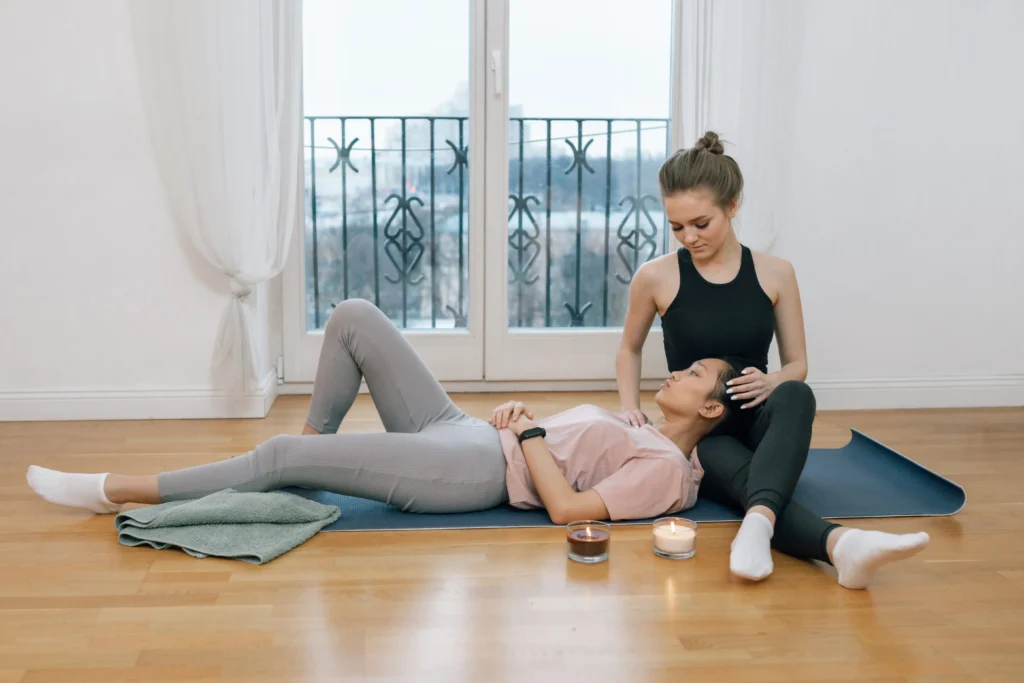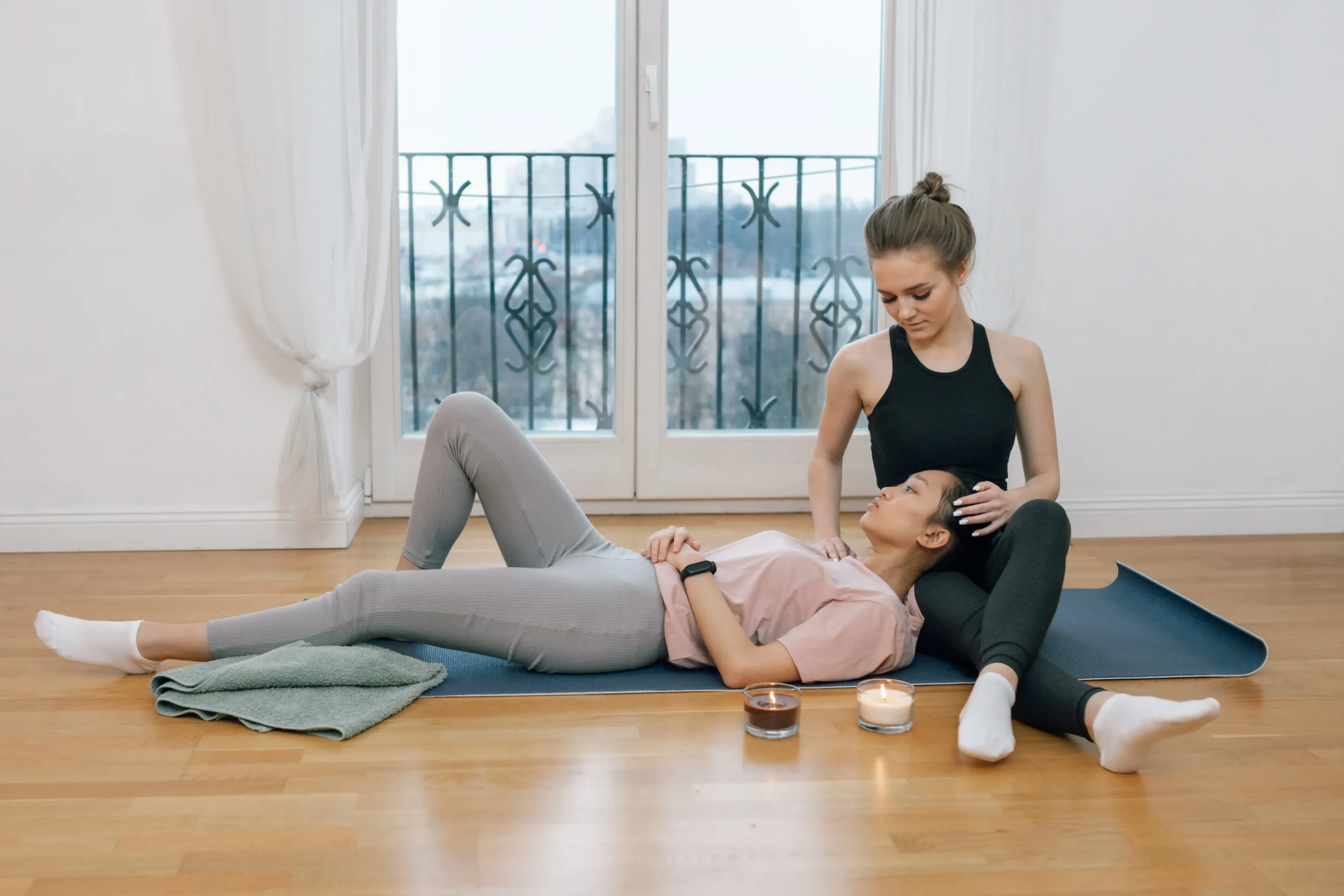Introduction

Understanding the Single Knee to Chest Stretch
The single knee to chest stretch is a gentle yet effective stretch that targets the lower back, hips, and glutes. It involves bringing one knee to the chest while lying on your back, providing a deep stretch to the muscles and connective tissues in the area. This stretch is commonly used in yoga practices and physical therapy routines due to its versatility and numerous benefits.
Benefits of Incorporating the Stretch into Your Routine
Incorporating the single knee to chest stretch into your routine offers a myriad of benefits. Firstly, it helps improve flexibility in the lower back and hips, making it an excellent stretch for individuals who spend long hours sitting or have a sedentary lifestyle. This stretch also alleviates muscle tightness, reduces lower back pain, and promotes better posture. Additionally, it can aid in digestion, as it stimulates the abdominal muscles and improves blood flow to the digestive organs.
Common Misconceptions Regarding the Stretch
While the single knee to chest stretch is a popular exercise, there are a few common misconceptions worth addressing. One misconception is that the stretch is only beneficial for individuals with lower back pain. In reality, this stretch can benefit anyone looking to improve flexibility and relieve discomfort in the lower body. Another misconception is that this stretch requires a significant amount of time or equipment. However, it can be easily incorporated into any daily routine and can be modified to suit individual comfort levels and goals.
Importance of Proper Technique

Aligning the Body for Maximum Effectiveness
To reap the full benefits of the single knee to chest stretch, proper alignment is crucial. Start by lying on your back with your knees bent and feet flat on the floor. Maintain a neutral spine, ensuring that your lower back remains in contact with the floor. This alignment allows for a deeper stretch and reduces the risk of strain or injury.
Breathing Techniques to Enhance the Stretch
Incorporating proper breathing techniques can further enhance the effectiveness of the single knee to chest stretch. As you bring your knee towards your chest, inhale deeply, expanding your ribcage. Hold your breath for a moment, feeling the stretch in your lower back and hips. Upon exhaling, release the tension and sink deeper into the stretch. The rhythmic breathing not only helps to relax the mind but also promotes muscular relaxation and a deeper stretch.
Modifications for Individuals with Limited Mobility
Individuals with limited mobility can still benefit from the single knee to chest stretch by incorporating modifications. For instance, if reaching your knee to your chest feels challenging, you can use a towel or strap to gently pull your knee closer to your chest. This modification allows for a gentler stretch and can be adjusted based on individual comfort. Additionally, individuals with limited mobility can perform the stretch while lying on a bed or elevated surface for added support.
Step-by-Step Guide: Performing the Single Knee to Chest Stretch
Starting Position and Initial Stretches
- Lie on your back with your knees bent and feet flat on the floor.
- Take a few deep breaths, allowing your body to relax and settle into the position.
- Gently rock your knees from side to side to release any tension in the lower back.
Executing the Stretch with Proper Form
1. Knee Positioning and Hugging Technique
- Begin by bringing one knee towards your chest, grasping it with both hands.
- Hug the knee closer to your chest, feeling a gentle stretch in your lower back and hips.
- Hold this position for 15 to 30 seconds, breathing deeply and relaxing into the stretch.
- Slowly release the knee and repeat the stretch with the other leg.
2. Engaging the Core Muscles
- While performing the single knee to chest stretch, engage your core muscles by drawing your belly button in towards your spine.
- This subtle engagement helps stabilize your spine and enhances the stretch by minimizing excessive movement in the lower back.
3. Common Mistakes to Avoid
- Avoid pulling or tugging on your knee forcefully, as this can strain the hip joints and lead to discomfort or injury.
- Remember to keep the movement controlled and smooth, avoiding any jerky motions or sudden movements that could cause strain.
Progressing and Adding Variations to the Stretch
1. Incorporating a Gentle Twist
- After bringing one knee to your chest, gently guide it across your body towards the opposite side.
- Keep your shoulders grounded while allowing the twist to target the muscles along the spine.
- Hold the twist for a few breaths, feeling the stretch in your lower back and torso.
- Return to the starting position and repeat the stretch on the other side.
2. Deepening the Stretch with a Towel or Strap
- To deepen the stretch, loop a towel or strap around the back of your knee.
- Hold the ends of the towel with both hands and use it to gently pull your knee towards your chest.
- This modification allows for a more intense stretch and provides better control for individuals with limited flexibility.
3. Combining the Single Knee to Chest Stretch with Other Exercises
- To further enhance flexibility and overall body mobility, consider incorporating the single knee to chest stretch into a dynamic warm-up routine or as part of a larger exercise sequence.
- You can combine it with exercises like lunges, squats, or gentle yoga poses to create a comprehensive workout routine that targets multiple muscle groups while promoting flexibility.
Understanding the Physical and Mental Benefits

Promoting Release of Tension and Stress
The single knee to chest stretch is a powerful tool for releasing tension and stress held in the lower back and hips. As you stretch the muscles and connective tissues in these areas, you encourage the release of built-up tension, resulting in an overall sense of relaxation and relief.
Enhancing Spine and Lower Back Flexibility
Regular practice of the single knee to chest stretch can significantly enhance spine and lower back flexibility. The stretch promotes the elongation of muscles and tissues in the back, reducing stiffness and improving range of motion. Ultimately, this increased flexibility can lead to better posture, reduced risk of injuries, and improved overall physical performance.
Assisting Digestion and Alleviating Discomfort
The gentle compression applied to the abdomen during the single knee to chest stretch can stimulate the digestive organs, assisting with digestion and alleviating discomfort. This stretch can help relieve bloating, gas, and constipation, allowing for better overall digestive health.
Safety Precautions and Contraindications

Consultation with a Healthcare Professional
Before incorporating the single knee to chest stretch into your routine, it is essential to consult with a healthcare professional, especially if you have any pre-existing medical conditions or injuries. They can provide personalized guidance and ensure that this stretch is suitable for your specific needs.
Precautions for Individuals with Lower Back or Knee Issues
While the single knee to chest stretch can help alleviate lower back discomfort, individuals with severe lower back issues, such as herniated discs or sciatica, should proceed with caution. It is advisable to consult a healthcare professional before attempting this stretch to avoid exacerbating existing conditions. Similarly, individuals with knee injuries or chronic knee pain should take personal limitations into account and modify the stretch accordingly to prevent further discomfort or injury.
Modifications for Pregnancy or Postnatal Recovery
Pregnant individuals and those in postnatal recovery should exercise caution when performing the single knee to chest stretch. It is recommended to consult with an obstetrician or a postnatal specialist to determine if this stretch is suitable and safe during pregnancy or the early stages of postnatal recovery. Modifying the stretch by using pillows or performing it in a side-lying position can help accommodate the growing or healing body.
Frequently Asked Questions (FAQs)
How often should the Single Knee to Chest Stretch be performed?
The frequency of performing the single knee to chest stretch varies depending on individual needs and goals. However, incorporating it into your routine two to three times per week can yield noticeable benefits. Listen to your body and adjust the frequency accordingly, ensuring that you do not overstretch or strain the muscles.
Can this stretch be beneficial for athletes and active individuals?
Absolutely! The single knee to chest stretch can be highly beneficial for athletes and active individuals. It helps improve flexibility, reduces muscle tightness, and aids in recovery after intense workouts or activities. Adding this stretch to a regular warm-up or cool-down routine can enhance performance and reduce the risk of injury.
Are there any limitations on when the stretch can be done during the day?
There are no strict limitations on when the single knee to chest stretch can be performed during the day. However, some individuals may find it more beneficial to perform it in the morning to wake up their body, while others may prefer to do it before bed to promote relaxation and better sleep. Ultimately, the best time to perform the stretch is the time that works best for your schedule and allows you to fully focus and engage in the stretch.
Can the stretch be practiced by individuals of all fitness levels?
Yes, the single knee to chest stretch can be practiced by individuals of all fitness levels. Beginners can start with gentle, controlled movements, gradually deepening the stretch as their flexibility improves. Advanced practitioners can experiment with variations and modifications to challenge themselves further. Remember to honor your body’s limitations and progress at a pace that feels comfortable and safe for you.
Is it recommended to warm up before performing the Single Knee to Chest Stretch?
Yes, it is essential to warm up the body before performing the single knee to chest stretch. Engaging in light cardiovascular exercises, such as brisk walking or cycling, for a few minutes helps increase blood flow and prepares the muscles for stretching. Additionally, performing dynamic stretches or joint mobilization exercises can further prime the body for the single knee to chest stretch.
Conclusion
Incorporating the single knee to chest stretch into your routine is a simple yet powerful way to unlock flexibility and ease discomfort in the lower back, hips, and glutes. By understanding the proper technique, benefits, and modifications, you can personalize this stretch to suit your needs and goals. Regular practice of the single knee to chest stretch can lead to improved flexibility, reduced tension, and enhanced overall well-being. So, let’s embrace the flexibility and freedom that this stretch offers and unlock the potential of our bodies one knee at a time.

